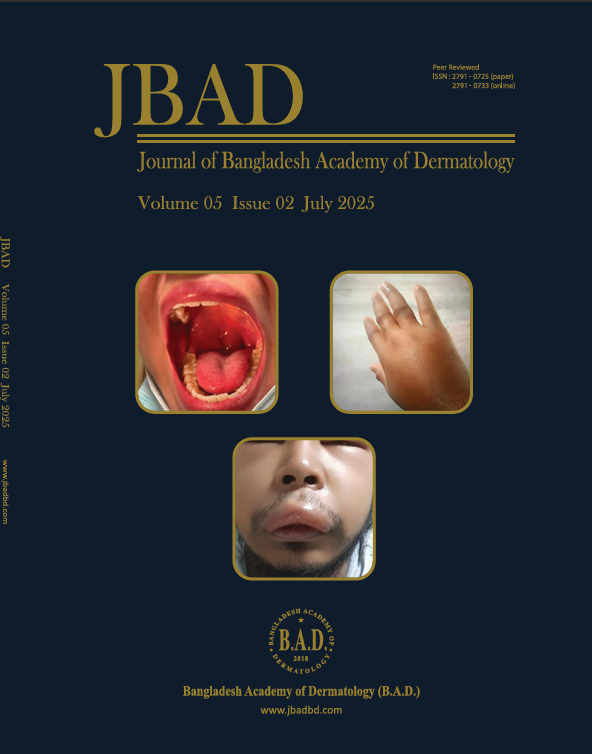Clinical spectrum of Muco-cutaneous manifestations of HIV infected patients, during attending Anti-Retroviral Therapy (ART) center, BSMMU
Abstract Background: Mucocutaneous manifestations are one of the most important clinical markers and may be the first clue of HIV infection and disease progression. A wide range of infectious, noninfectious, and neoplastic skin lesions develop during the course of the disease. These mucocutaneous manifestations may indicate the worsening of immune status. Objective: To explore the mucocutaneous manifestations among HIV patients of Bangladesh. Methods and Materials: A cross sectional study was conducted during the period of January 2020 to June 2021. Ninety-Seven HIV patients attending in at Anti-Retroviral Therapy (ART)center of Bangabandhu Sheikh Mujib Medical University, Dhaka, Bangladesh were enrolled in this study based on exclusion and inclusion criteria. Mucocutaneous manifestations of all the patients were clinically diagnosed. Consecutive type of sampling technique was applied to collect the sample from the study population. Results: Majority of the patients belonged to the age group between 31- 40 years (37.1 %) and most of the patients were male 61 (62.8 %). Most common infectious mucocutaneous manifestations were fungal infection in 71(73.2%) followed by parasitic infections in 13(13.4%), bacterial infection in 5(5.2%), viral infections in 3 (3.1%) and among the fungal infections Tinea Corporis 40 (41.2%) was most common, followed by Tinea Cruris, Oral candidasis 10(10.3%) each and among the noninfectious manifestations Seborrhoic Dermatitis 16 (16.5%) was the most common. Conclusion: Most common mucocutaneous manifestations were fungal infection (Tinea corporis, Tinea cruris, Oral candidiasis) followed by Seborreic Dermatitis and Scabies. Keywords: Muco-cutaneous manifestations of HIV, infectious mucocutaneous manifestations of HIV, non-infectious mucocutaneous manifestations of HIV. |

